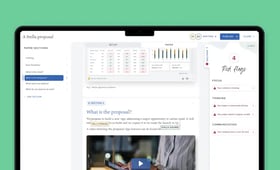Dominic Barton is chair at Rio Tinto and Leapfrog Investments, having previously been global managing partner of McKinsey and the Canadian ambassador to China. Here, he reflects on the opportunities for AI to improve decision-making in the boardroom and how getting the board’s culture right can enable it to be more effective.
As chair, do you have golden rules that you follow in the boardroom?
I have three.
The first one is that great meetings don’t just hinge on great people; they also need to be set up for success. So, to ensure the conversation remains focused and on topic, I write a pre-meeting note to the board that sets out the context of the session and how it fits into what we are trying to achieve.
Then, once in the meeting — but before we begin to debate a topic — I go around the room and ask, “How do you feel about the suggestions made in the board paper? Are you comfortable with what is being proposed?” It only takes around 10 minutes, but it creates an atmosphere of focus and gives the management team an indication of where everyone in the room is at and where they need to spend time allaying concerns and listening to feedback.
Second, boards' decisions are fundamentally judgement calls, based on the experience and perspective of the board members. It’s not about whether a specific decision is absolutely right or wrong. So I periodically remind myself and my fellow directors that, often, the correct course forward isn't clear, but that we’re here to add value by helping management work through these judgement calls.
And finally, I rely on two simple but crucial questions: “What is it we’re trying to do? What is our approach to decision making?” It’s easy for boards to sleepwalk under the false safety of following “good governance” but simply dedicating two hours on the agenda to discussing risk doesn’t mean you truly got under the skin of the matter. Continually asking why you do the things you do protects you from that boiling frog syndrome.
“Two simple but crucial questions: ‘What is it we’re trying to do? What is our approach to decision making?’”
What’s keeping business leaders awake at night right now?
The sheer level of disruption and volatility, and the seemingly ever-increasing level of complexity.
The amount of time available for leaders to react has decreased dramatically. It’s no longer possible to huddle over the weekend and come out with your solution — you might instead get an hour if you’re lucky. Meanwhile, just as the timeframe is getting more constrained, the issues themselves are becoming knottier and more complex. So, the challenge is becoming threefold:
- Having a clear method to distinguish between what should be engaged with urgently and what can wait — so that you act in a consistent, well-thought-out fashion even under stress.
- Giving multiple levels of the organisation the freedom to make that judgement call and the intellectual framework to do it well — so that you’re not paralysed whilst waiting for a decision from above.
- Conveying all that rapidly and intelligibly to the board — including to directors who aren’t as close to the business as the management team is.
Compared to even just five years ago, the need for faster decision-making is increasingly a concern at the top, and I see this only becoming more pressing in the coming years.
Register for our newsletter to get a monthly compilation of our latest chair interviews, governance research, and upcoming webinars and events, along with weekly round-ups of the top news that matter to board members.
Register NowIf you could make a single change that would make boards effective, what would it be?
As a chair or CEO, it’s easy to go through the motions and focus on the various board matters that are constantly cropping up and are more than enough to make sure you’re always “busy”. But if that’s all you do, then the deep, fundamental issues to the business will be left unaddressed, as will the real worries that lie behind these issues.
Eventually, because the root problems don’t get resolved, the board starts to feel like it’s not getting the right information, and both its culture and dynamic with management become more aggressive. This also applies anywhere that the CEO–chair relationship isn’t as trustful or as open as it should be. Invariably, an absence of alignment and trust will lead to a death cycle wherein the board takes up an attitude that management is doing something wrong. In response, the management team self-protects by becoming more tactical about what it shares with the board and when.
“Eventually, because the root problems don’t get resolved, the board starts to feel like it’s not getting the right information, and both its culture and dynamic with management become more aggressive.”
A more effective approach would be a collaborative endeavour; one in which all understand that, ultimately, they share the same objective, and where the board can offer its wealth of insight to make it happen. But you can only get there by asking some fundamental questions first: how do we want the board to interact with management? How does our governance setup enable this? And what kind of information does the board need to make decisions? Once you’ve answered these, you’ll have identified the areas where you need to make changes and gotten a good picture of what that dynamic looks like in practice.
What do you think are the main opportunities and challenges when it comes to using AI to augment boardroom decision-making?
I’m looking forward to seeing where the technology goes. AI tools are not some kind of panacea and won’t give you all the answers, but they could cut down the time you spend reaching them. For example, an AI product that’s able to draw on your company’s information (rather than publicly available data) could give directors a list of the questions they “should” have asked on an issue but didn’t think of.
These systems aren’t foolproof, however: you’ll never know whether they’re right if you haven’t read the board papers yourself; they come with their own set of biases; and, for any potential implementation to be effective, the data being input must be of good quality. So, for now at least, boards shouldn’t blindly trust them.
“You’ll never know whether AI tools are right if you haven’t read the board papers yourself.”
Where these tools could really shine in the short term is in helping the management team put together its board pack — for instance, through improving the authors’ writing by summarising what they’ve written. Here, the danger of AI misrepresenting an issue would be greatly reduced, because the report writer would be able to judge whether the algorithm has done an accurate job or not.
A previous interviewee of ours, Suzanne Heywood, called you out as a champion of women during your time at McKinsey. What did you do that had most impact?
I had my own role model for this — Lowell Bryan, a senior partner at McKinsey who quietly helped many women develop their careers in the organisation. He never bragged about it, but he took special care to give them opportunities to increase their exposure and develop their skillsets for leadership. There’s now an annual award named after him where women in the company nominate a man who has helped to develop them and their career; it’s a pretty big deal there and people are really keen to be nominated.
When I was working with Suzanne Heywood, she stood out as someone who had great potential as a leader. However, she was very modest, so one day I sat down with her and asked what it was she wanted to do — and I told her I wasn’t going to move on until she said something, and to forget about being modest! She did share with me her ambition, and we then went about raising her profile within the business so that she could achieve it.
Generalisations like this come with the usual caveats, but I think that on the whole women are more modest than men tend to be, and that can work against you because verbalising your ambition is the first step to realising it. Once you’ve said out loud what it is that you want to achieve, you can start to work out what you need to do to get there.



